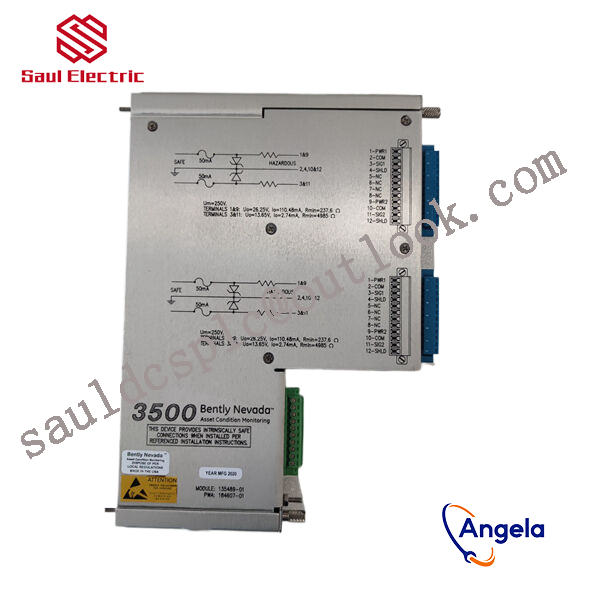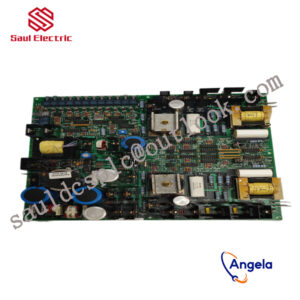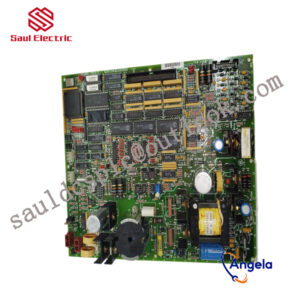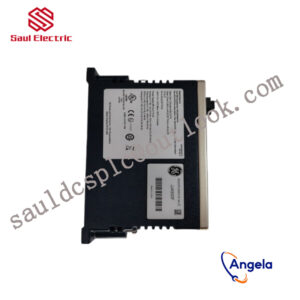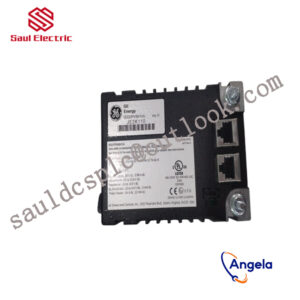Description
- BENTLY 3300/61 gateway is designed with multi protocol compatibility and modularity, seamlessly connecting industrial systems,
- operating at a wide temperature range of -40 ° C to 85 ° C, supporting 8-channel rotating equipment monitoring,
- remote configuration to improve efficiency, and ensuring stable power and automation.
It can connect the Bently Nevada 3500 system with other control systems or host computers to achieve data interconnectivity.
thus achieving integration with other industrial control systems.
Design of ABB industrial robot deburring and grinding workstation based on RobotStudio simulation softwareintroductionAs an official offline programming software for ABB robots, Robotstudio not only has powerful simulation and offline programming functions, but also has automatic path generation function and simulation monitoring collision function. It can realize the simulation of robots in real scenes, so as to timely update existing robot programs. optimize. On-site teaching programming will affect normal production activities on site.The application of Robotstudio software offline programming can reduce on-site teaching and programming time.As a traditional process of mechanical processing, deburring and grinding have a wide range of applications. However, for a long time, in the process of manual deburring and polishing, there have been differences in operations between workers. The manual operation is not repeatable and the deburring effect is unstable, which has seriously affected the surface quality and service life of the finished product; and the working environment There is a large amount of dust floating in the air and the conditions are harsh, seriously endangering the physical and mental health of workers. With the proposal of “Made in China 2025”, intelligent manufacturing production has become an important development direction for the transformation and upgrading of the future manufacturing industry. The use of industrial robot automated production lines for repetitive batch processing operations can not only greatly improve production efficiency, but also greatly improve product quality. Yield and production stability. Therefore, before designing the robot polishing program, if the shape, size and polishing amount of the workpiece to be polished are known, the robot offline program can be written on the Robotstudio software according to the existing conditions, thereby improving the efficiency of on-site programming.1Design task descriptionThis task is to create a new simulation workstation in ABB robot simulation software Robotstudio. The corresponding training equipment in reality is the Yalong YL-l360A industrial robot deburring and grinding system control and application equipment. The industrial robot selection and method of the simulation workstation are The grinding head installed on the blue plate refers to the Yalong YL-l360A industrial robot deburring and grinding system control and application equipment, and the workpiece is customized. The ABB industrial robot deburring and grinding workstation simulation training process includes: creating a workstation, setting up tools, creating smart components, creating tool coordinate systems, creating trajectories, programming, simulation design, and verification.2 Task implementation2.1 Create a workstationImport the robot: First, create a new simulation workstation in the Robotstudio software. The workstation name is self-named, and then import the corresponding industrial robot IRB1410. The robot position remains unchanged by default. Create a robot system, modify the system options, check 709-1DeviceNetMaster/s1ave, select Chinese as the language, and leave the other options unchanged by default, then click Confirm to create the robot system. After the robot system is created, hide the industrial robot IRB1410 to facilitate subsequent workstation operations.Import workpiece: The workpiece here is customized, and the corresponding workpiece is selected according to the actual situation on site. This article uses the original workpiece Curvet in Robotstudio software. After importing it into the workstation, according to the reachable range of the robot, just place the workpiece at a suitable location within the reachable range of the robot, as shown in Figure 1.Import the grinding rotor tool: First, create a new grinding rotor tool component – rotor – copy (2) and rotor – copy (2) in the so1idworks 3D software. The rotor – copy (2) is a rotatable grinding rotor. —The copy is the tool body, which is the grinding rotor frame, and is installed on the robot flange, as shown in Figure 2.2.2 Setting toolsFirst, move the rotatable grinding rotor and the tool body to the local origin based on point A, and adjust the initial tool angle so that the grinding rotor is parallel to the x-axis of the geodetic coordinate system, as shown in Figure 3. Set the local origin of the tool body at this time, change the position x, y,: to 0, 0, 0, and change the direction x, y,: to 0, 0, 0.Figure 3 Tool settingsCreate a new frame at point B of the tool body, name it “frame l”, and adjust the direction of frame l so that the axis is perpendicular to the plane of point B. The specific direction is shown in Figure 4.
128275-01 3500 series front card and rear card
3300/45 Bently State Monitoring Interface System
146031-01 3500 series front card and rear card
126632-01 Belonging to the Bently Nevada 3500 series
3500/25 149369-01 3500 series front card and rear card
3500/32 125712-01 Bently State Monitoring Interface System
ASSY78462-01U BENTLY series: 3500 communication gateway module
1900/65A 3500 series front card and rear card
3500/94 145988-01 Mechanical vibration monitoring system
125760-01 3500 series front card and rear card
3500/32M 149986-02 BENTLY TSI system module
330130-080-00-00 Mechanical vibration monitoring system
3500/42M 128229-01 BENTLY series: 3500 communication gateway module
3500/42M 176449-02 3500 series front card and rear card
125768-01 Mechanical vibration monitoring system
177992-01 Bently State Monitoring Interface System
3500/22M 3500 series front card and rear card
3500/32М 149986-02 BENTLY TSI system module
125736-01 BENTLY series: 3500 communication gateway module
3500/25-01-01-01 BENTLY TSI system module
330180-X1-05 BENTLY series: 3500 communication gateway module
3500/15 Belonging to the Bently Nevada 3500 series
3500/22M 288055-01 Mechanical vibration monitoring system
3500/92-02-01-00 Belonging to the Bently Nevada 3500 series
3500/22M BENTLY series: 3500 communication gateway module
3500/42M 3500 series front card and rear card
3500/33 BENTLY series: 3500 communication gateway module
81545-01 Bently State Monitoring Interface System
3500/22M 138607-02 Belonging to the Bently Nevada 3500 series
330500-02-04 BENTLY TSI system module
3500/40M 140734-01 BENTLY TSI system module
3500/40M 176449-01 Bently State Monitoring Interface System
3500/50 BENTLY TSI system module
135462-01 Bently State Monitoring Interface System
3500/72M 140734-08 BENTLY TSI system module
135489-01 BENTLY TSI system module
330180-50-00 BENTLY TSI system module
3500/22M 138607-01 3500 series front card and rear card
136294-01 3500 series front card and rear card
79492-01 Mechanical vibration monitoring system
135613-02 Bently State Monitoring Interface System
3500/50-01-01-00-00 3500 series front card and rear card
3500/65-01-00 Belonging to the Bently Nevada 3500 series
3500/50-04-00 Bently State Monitoring Interface System
3500/25 184684-01 BENTLY TSI system module
3500-53 Mechanical vibration monitoring system
3500/92-04-01-00 BENTLY series: 3500 communication gateway module
3500/70M 140734-09 BENTLY series: 3500 communication gateway module
3500/50M BENTLY TSI system module
3500/22 146031-02 Mechanical vibration monitoring system
3500/15 127610-01 Bently State Monitoring Interface System
24765-02-00 Mechanical vibration monitoring system
79492-01 BENTLY TSI system module

